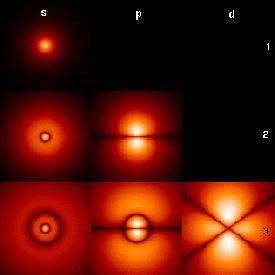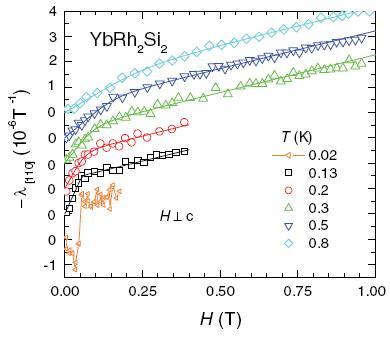Magnetic properties disappear at almost 0 degrees absolute
A strange property of ferromagnetism near absolute zero (0 K) provides direct evidence that some quantum phase transitions occur very differently from the traditional transitions occurring at temperature. high.
 The researchers conducted a ferromagnetic compound into the magnetic field and observed the transition from iron to non-magnetic as expected. To their surprise, at higher magnetic fields, they observed a disturbing change in the characteristics of metals. At a temperature lower than the lower temperature, both magnetic phase transition and latent change are converging at a quantum-critical critical magnetic field value - regardless of traditional phase transition methods. in the usual way ( Science 315 969, 2007 ).
The researchers conducted a ferromagnetic compound into the magnetic field and observed the transition from iron to non-magnetic as expected. To their surprise, at higher magnetic fields, they observed a disturbing change in the characteristics of metals. At a temperature lower than the lower temperature, both magnetic phase transition and latent change are converging at a quantum-critical critical magnetic field value - regardless of traditional phase transition methods. in the usual way ( Science 315 969, 2007 ).
In traditional continuous phase transitions, the change in temperature leads to material being able to move from one state to another (eg magnetic to non-magnetic). When the material reaches the critical temperature, thermal fluctuations will cause " sprouts " of the new state and grow in the old state and eventually take up the entire material. During the phase transition, the energy difference between the two states will advance to 0 in a way that is defined as " normal " phase transition. All known phase transitions can be described by one of the " conventional styles ".
At extremely low temperatures near absolute zero, the energy for thermal fluctuations is very low and quantum "zero" fluctuations are thought to play a role in phase transition . This fluctuation keeps matter in a fixed movement - even at 0 degrees. However, it is not clear whether the " quantum phase transition " determined by these quantum fluctuations will belong to the " conventional way " such as phase transitions due to thermal fluctuations.

Figure 1. The magnetic dependence of magnetization coefficient at different temperatures.
Recently, Philip Gegenwart and colleagues of the Max Planck Institute for Solid Chemistry, Germany (Max Planck Institute for Chemistry of Solids), together with their colleagues in the United States, published the emergence of quantum fluctuations leading to two current separate statue in an antiferromagnetic metal . This unexpected property was detected at a temperature of 0.8 K in the compounds of Ytterbium, Rhodium and Silicon (Yb-Rh-Si: YRS). The researchers believe that the unwanted change they have observed at higher magnetic fields may be related to "entanglement" between magnetic spins and conduction electrons. Magnetic spins are fixed electrons in individual atoms and usually have little effect on conductive electrons. However, at high magnetic fields, and very low temperatures, they appear and become entangled with conduction electrons to create pseudo-particles that behave almost like heavy electrons. Gegenwart and colleagues may have observed a transition to the " heavy electronic liquid " state of matter.

Figure 2. The resistivity as a function of the magnetic field, measured at different temperatures.
According to Andrew Schofield of Birmingham University (UK), if quantum fluctuations simply take on the role of thermal fluctuations, only the magnetic phase transition is observed. He told Physics Web that the appearance of the second separate property in the phase diagram is related to quantum critical point despite our current understanding of " conventional styles " and one What new physics theory requires to describe a pure quantum phenomenon?
The Doctrine of Independence
- Long strides close to the secret of absolute zero
- There is evidence that cannot be achieved 'absolute zero'.
- Magnetic tweezers shed light on the mechanical properties of cells
- New discoveries about the nature of magnetic fields
- Using light alters superconducting properties
- The sun is about to ... disappear?
- The black spot The sun is about to disappear?
- The secret of not freezing of Antarctic penguins
- 100 years from now, Earth's magnetic field will reverse
- Jacket 'invisibility' for sensitive folders
- For the first time, the magnetic field connecting the two galaxies was observed
- The strange phenomenon can cause Earth's magnetic field to reverse
 'Fine laughs' - Scary and painful torture in ancient times
'Fine laughs' - Scary and painful torture in ancient times The sequence of numbers 142857 of the Egyptian pyramids is known as the strangest number in the world - Why?
The sequence of numbers 142857 of the Egyptian pyramids is known as the strangest number in the world - Why? History of the iron
History of the iron What is alum?
What is alum?